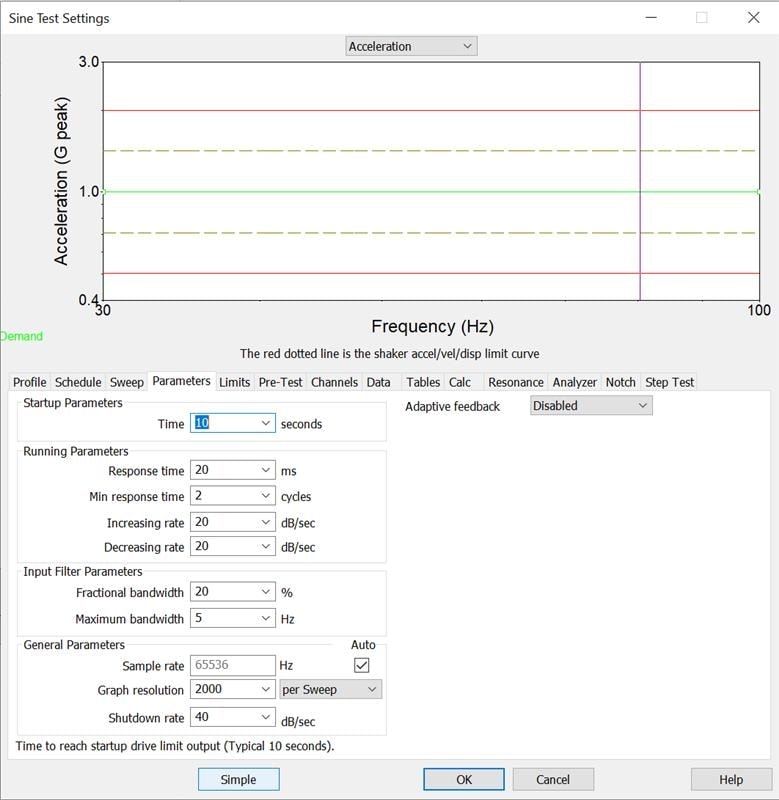In VibrationVIEW, the Quick Test option serves as the default for Sine, Random, and Shock tests. It is a quick option for defining tests and requires the entry of just a few simple parameters. To provide an efficient and optimized experience, however, this default can be removed.
The Quick Test is the first option to appear when a new sine, random, or shock test is created. For example, when a user selects New Test > Sine, the Sine Test Settings dialog box appears with the Quick Test as the default (Figure 1a). The user can enter the parameters, click OK, and a simple test is generated.
Clicking the Advanced button on the bottom left of the dialog box directs the user to VibrationVIEW’s standard multi-tab dialog box (Figure 1b).
How to Remove Quick Test as the Default
This test option can be removed as the default if is not necessary/preferred. To set the Advanced test option as the default for sine, random, and shock, click Configuration > Parameters. On the left, point to Global Parameters and deselect Define new tests as Quick Tests. Click OK.
Why Quick Test?
This test option simplifies the process of creating a basic sine, random, or shock test. Each quick test type necessitates just several parameters.
| Sine | Random | Shock |
|
|
|
For all three test types, the Report check box opens a report at the end of the test. The default report template is “Test Report.rtf.”
VibrationVIEW offers the this test option to simplify the process of running basic tests, which are recurrent in some industries. If the Quick Test option is the right fit for your testing needs, here are several tips.
Sine Quick Test Tips
-
- To dwell at a specific frequency, enter the same value for the start and end frequency.
- Either displacement or acceleration can be blank, but never both.
- For a sine dwell, the sweep rate parameter can be blank.
Random Quick Test Tips
-
- Up to ten frequency/amplitude breakpoints can be entered.
- The RMS acceleration and peak-to-peak displacement requirements for a 100 percent level are located at the bottom of the dialog box. The pk-pk displacement is calculated using an assumption of 3-sigma peak displacement. The actual displacement required to run the test may exceed this estimated displacement.
Shock Quick Test Tips
-
- The Optimize Centering drop-down box is used to select a centering method. A shaker that is not nominally centered when stationary will require the pulse without displacement centering. To disable centering, click Advanced > Pulse and select the appropriate option.
- A Delay Between Pulses value of 0 will output pulses as fast as the controller is able.


